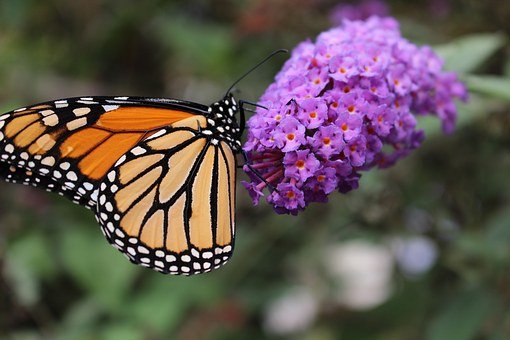Attracting butterflies to your yard also attracts beneficial insects and the best way to attract them is with plants native to your region.
Many people either curse or shy away from caterpillars which are the larval stage of butterflies because either they find them ugly or a nuisance due to the foliage they consume. However, once caterpillars mature into adult butterflies people are attracted them and even want to attract them to their gardens.
Surprisingly butterflies are not only attractive but they aid pollination of wildflowers and crops and may even attract beneficial insects that control garden pests. Scientists have long known that buffer zones rich in native plants have been beneficial to agriculture. Now they suspect the butterflies attracted to these zones may be one of the benefits. Currently scientists studying how butterflies, other wildlife such as beneficial insects, and native plants species interact.

image source pixabay.com
Gardeners can also benefit from butterflies if they grow plants that attract them. However, they may need to look beyond their local garden center for help.
How to Attract Butterflies
Some butterfly species like monarch butterflies migrate great distances but other are more local and therefore evolved with the native vegetation. This means they may require some local native plant for some portion of their life cycle. This means if you want to insure your garden has butterflies planting local native plants may be necessary.
Planting a garden specifically to attract butterflies may take a little researching to learn what plants are native to your region in order to successfully attract them. Contacting local garden clubs and native plant societies may be helpful. Also visiting nearby botanical gardens and nature centers to actually see region wildflowers growing may also be helpful.
Acquiring native plants to your yard may be a little more involved than going to your local garden center since these places don't specialize in native plants. Again native plant societies and local garden clubs may be able to help you find sources of seed and plants. Don't try removing plants from wildlands since their removal may be illegal and many don't transplant well anyway. Once identified, seed or plants native to your region may be ordered online.

image source pixabay.com
Maintaining Butterfly Habitat
One of the nice characteristics of butterfly gardens is if the plants used are truly native to your region it will require very little maintenance. Probably the most time consuming task will be planting it and clearing out old debris from the previous season.
Many native plants that attract butterflies are perennial meaning they come up year after year without needing to be replanted. These plants will probably only require the removal of the previous year's growth and a little watering during dry spells.
Annual wildflowers will need to be replanted every year but planting them from seed can as easy as broadcasting seed and sprinkling a light layer of soil over the top. However, they will need to be cleared out and replanted every year. If you let the dead flower heads sit in the garden over the winter they may reseed themselves.
Another benefit of native plant butterfly gardens is they attract few pests and lots of beneficial insects. However, other plants in your garden may still attract few pests so be careful not to spray insecticide near your butterfly garden. Avoid insecticide drifting into the butterfly garden by only spraying on calm days. Even organic insecticides can kill butterflies and beneficial insects. A better strategy is to let the beneficial insects attracted to the butterfly garden control pest insects instead of spraying.
An added attraction for the native butterfly garden is if you let the debris from the previous growing season sit in the garden over the winter the seeds in the expired flower heads will attract birds. These birds also have some benefit in that they also may control some pest insects.
